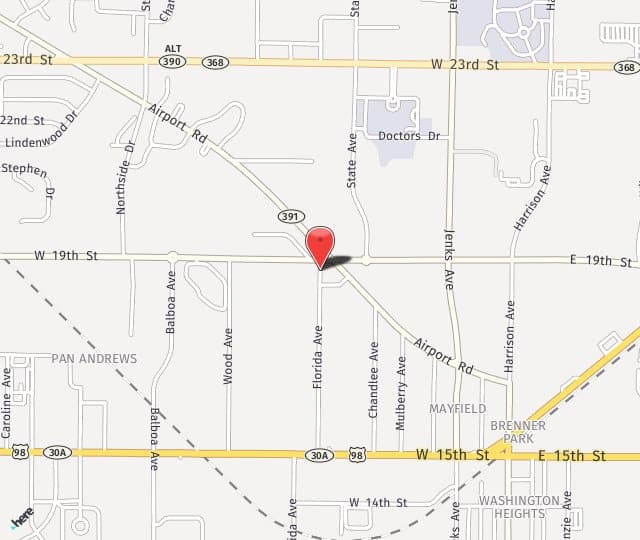Deep vein thrombosis (DVT) occurs when a blood clot, also known as a thrombus, forms in a vein deep within the body. Such clots most frequently form in the legs, but may occur in other parts of the body. Blood clots can be caused by anything that prevents the blood from circulating normally or clotting properly. Deep vein thrombosis may be caused by extended periods of inactivity; in some cases it may be the result of staying in bed during a long hospital stay or sitting for a long-period of time on an airplane flight. An injury to a vein or certain medical conditions may also cause a blood clot to form. DVT is serious condition that requires medical treatment, as a blood clot may travel to the blood vessels of the lungs, heart or brain, causing serious complications which can be fatal.
Causes of DVT
Blood clots may occur in the veins as a result of damage to veins, slow blood flow, or thickened blood consistency. DVT often occurs in individuals over the age of 60, however, it can occur at any age. Factors that may increase the risk of DVT include:
- Prolonged periods of inactivity or bed rest
- Long periods of sedentary travel
- Certain inherited conditions
- Vein damage from surgery or injury
- Reactions to certain medications
- Hormone replacement
- Birth control pills
- Certain cancer treatments
- Smoking
Increased pressure in the veins from obesity or pregnancy may also contribute to deep vein thrombosis.
Symptoms of DVT
DVT may initially occur with no noticeable symptoms at all. When symptoms occur they may include:
- Red or discolored skin
- Swelling along the vein
- Swelling in the legs, ankles and feet
- Pain or tenderness at the site
- Increased warmth in the area
In some cases, pain or tenderness in the leg may only be experienced when standing or walking.
Diagnosis of DVT
A variety of methods are used to diagnose DVT. After a physical examination and a review of symptoms, blood tests are performed to detect elevated levels of D-dimer, a clot-dissolving substance found in the blood which may indicate the presence of a clot. Imaging tests are also performed and may include:
- Ultrasound
- CT scan
- MRI scan
A lower extremity venography may be performed to view the veins in the leg and detect blood clots. Blood coagulation tests, which measure the blood‘s ability to clot, may also be performed.
Treatment of DVT
Treatment of DVT is focused on preventing the existing blood clot from enlarging, preventing the development of another clot, and averting an embolism. An embolism occurs when a clot or piece of plaque breaks loose from its site of origin and travels somewhere else in the body, such as the lungs, heart or brain. An embolism is a life-threatening event which may result in many dangerous consequences, including a stroke or heart attack. There are two basic treatments for DVT: medication and compression. The physician will determine which medication may be appropriate and whether the use of compression stockings will be helpful.
Compression Stockings
Compression stockings are elastic stockings that produce pressure on the veins and keep blood from pooling and clotting. In mild cases of venous insufficiency, these stocking may keep the condition under control without medication.
Anticoagulants
Anticoagulants, or blood thinners, are medications which thin the blood and provide for easier blood flow. Common blood thinners are heparin and warfarin. Heparin is administered through injection or intravenous tube. Warfarin is prescribed in pill form.
Thrombolytics
Thrombolytics are medications used to quickly break up the clot and are usually used only in extreme situations since they present a risk of sudden bleeding. Thromboytics are most often used immediately following a heart attack or stroke.
Thrombin Inhibitors
Thrombin inhibitors interfere with the clotting process by directly inhibiting the enzyme thrombin. Thrombin inhibitors are increasingly used as anticoagulants in place of thrombolytics.
In some cases, a filter may be inserted inside the vena cava, the large vein that carries blood from the lower half of the body back to the heart for oxygenation. The filter is designed to prevent a pulmonary embolism by catching a blood clot before it travels to the lungs.
Complications of DVT
The greatest risk of DVT is an embolism, which occurs when a blood clot breaks off and travels through the bloodstream to do damage at another site. If the thrombosis happens in the thigh, the chances it will break off and travel to produce complications is greater than if the clot is in the lower legs or other parts of the body. An embolism is extremely dangerous and occurs in the lungs as a pulmonary embolism, in the brain as a stroke, or in the heart as a heart attack. Organ damage and death can easily result. Symptoms of an embolism may include:
- Sharp chest pain, worsened by a deep breath or a cough
- Dizziness
- Sudden shortness of breath
- Cough with pink, foamy mucus
Deep vein thrombosis requires immediate medical care and individuals should seek treatment if they experience any related symptoms.
Prevention of DVT
While not all cases of deep vein thrombosis can be avoided, there are several ways to lessen the risk of DVT or to slow the progression of the condition. A patient in danger of DVT may improve vascular health by:
- Remaining physically active
- Not sitting or standing in one place for too long
- Losing weight
- Managing blood pressure
- Refraining from smoking
When taking a long car or plane trip, walking or stretching the legs once in a while can help circulation. Patients should also take any prescription anticoagulant medications as directed by their doctor, to prevent complications from occurring.

